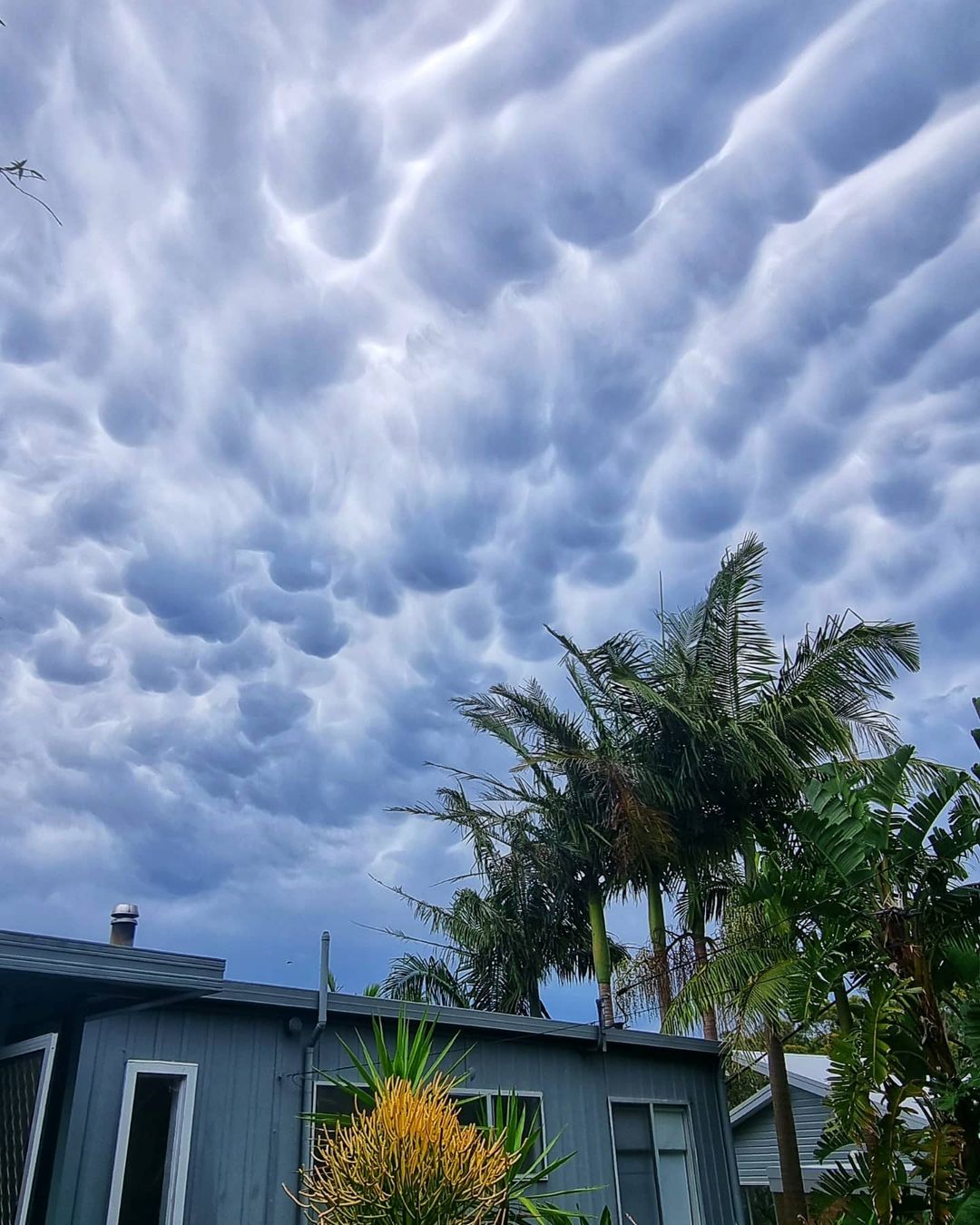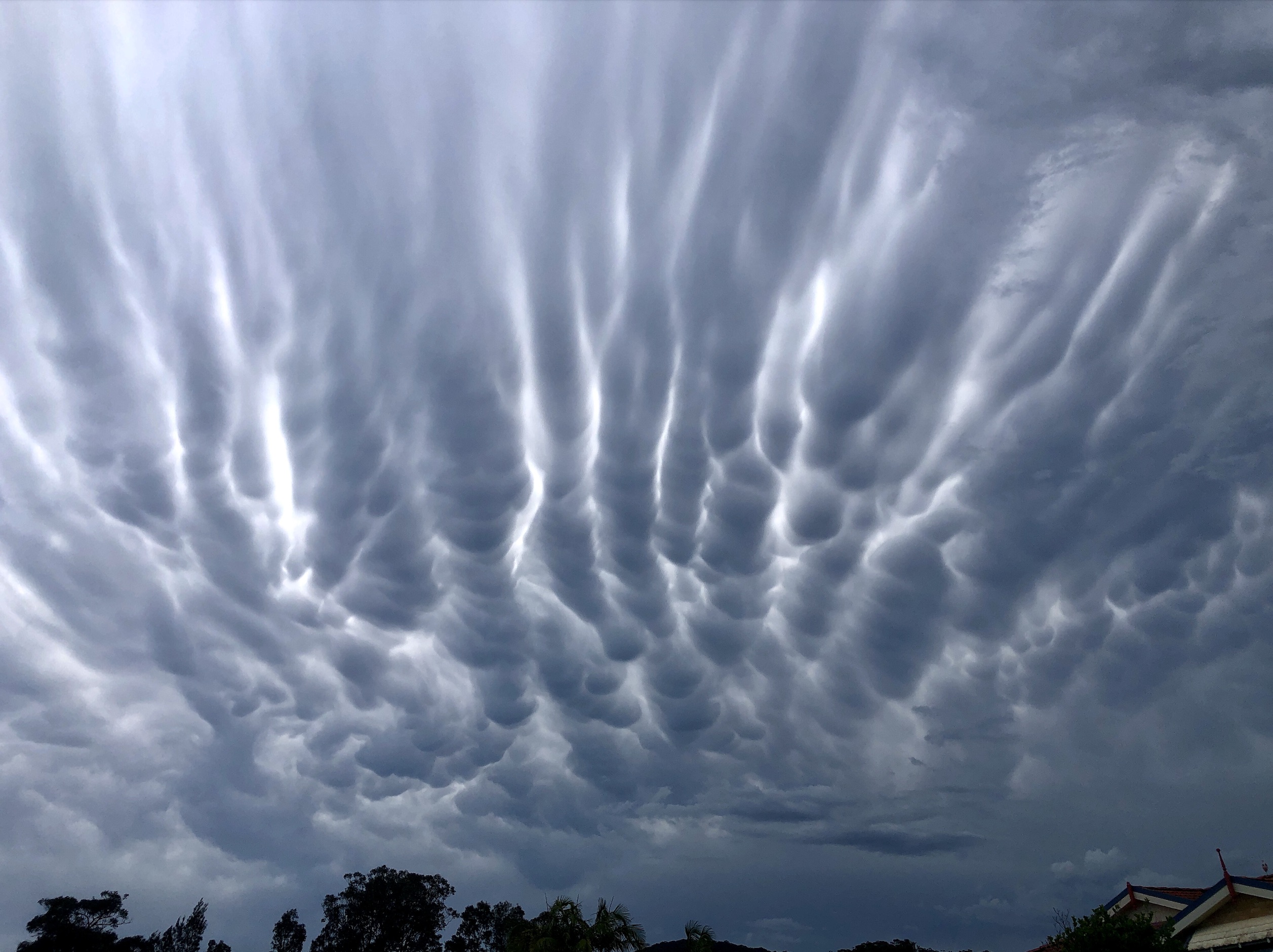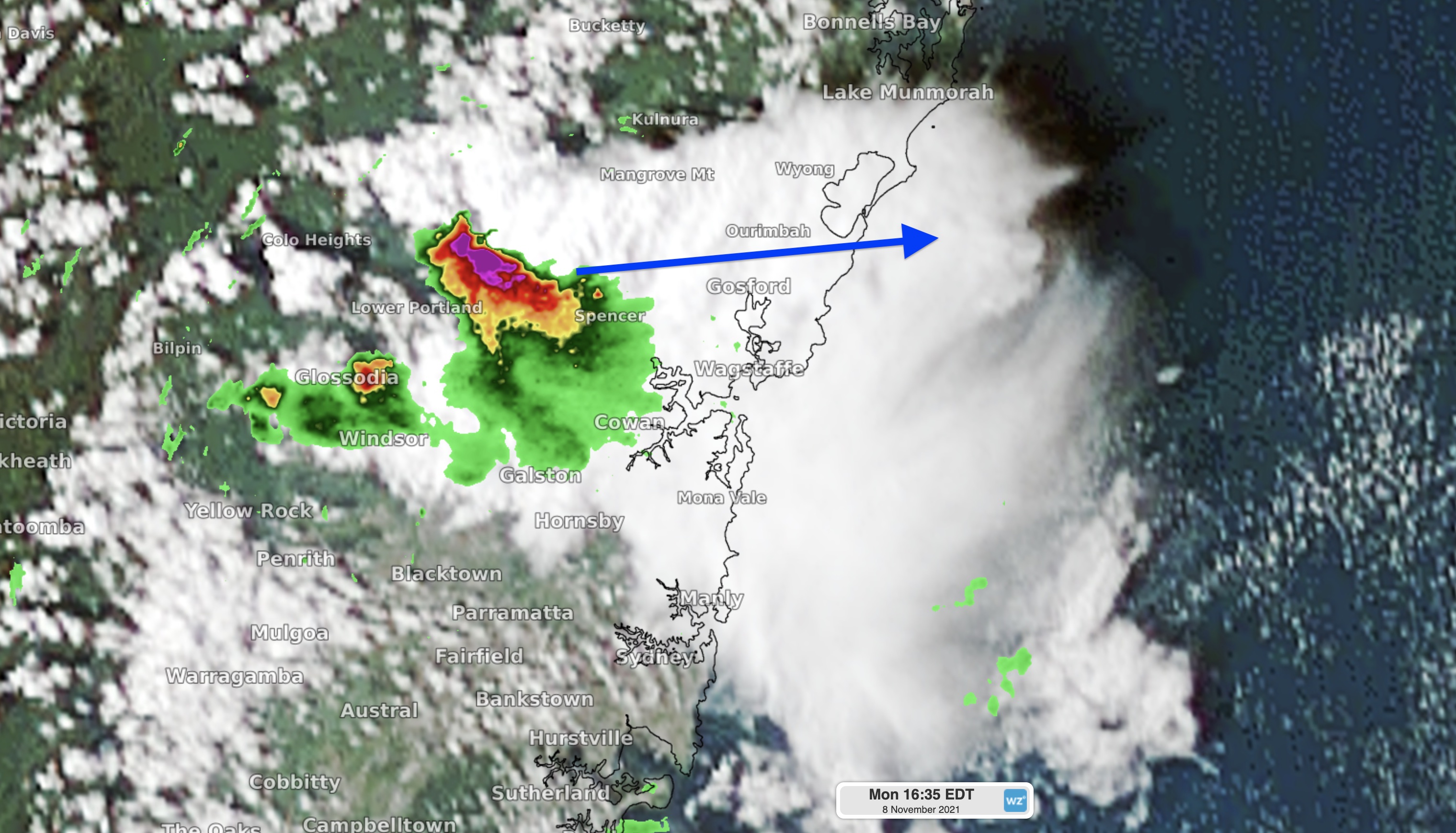What are mammatus clouds?
A rare display of mammatus clouds appeared above parts of Sydney and the Central Coast on Monday afternoon. But what caused this unusual cloud formation, and why are they called mammatus?
The photos below were captured on the Central Coast of NSW on Monday afternoon at around 4:30pm.

Image: Mammatus clouds over the Central Coast on Monday, November 8, 2021. Source: @zeemerven / Instagram

Image: Mammatus clouds above the Central Coast on Monday, November 8, 2021. Source: Ben Domensino
At the time these images were taken, a severe thunderstorm was moving from south to north along the ranges to the west of the Central Coast. You can see this thunderstorm in the sequence of satellite images below.
The thunderstorm above played a key role in producing the mammatus clouds on Monday.
Mammatus clouds develop when sinking air causes udder or tube-like protrusions on the underside of a cloud's base.
While they can develop in several different types of clouds, they are typically seen on the underside of a thunderstorm's anvil cloud, which is a high-level cloud spreading out horizontally at the top of a thunderstorm.
Monday's mammatus clouds appeared on the base of the anvil that was connected to the storm travelling along the ranges. The photo below shows the storm from a wider angle, with the decaying mammatus formations near the top of the image and the storm near the horizon.
The satellite image below shows a top-down view of the high-level anvil cloud extending towards the east from the top of the thunderstorm.

Image: The blue arrow highlights a mammatus-producing cloud being blown towards the east of a severe thundrstorm over eastern NSW on Monday, November 8, 2021.
The name mammatus is derived from the Latin mamma, which means 'udder' or 'breast', describing the shape of the cloud pouches.